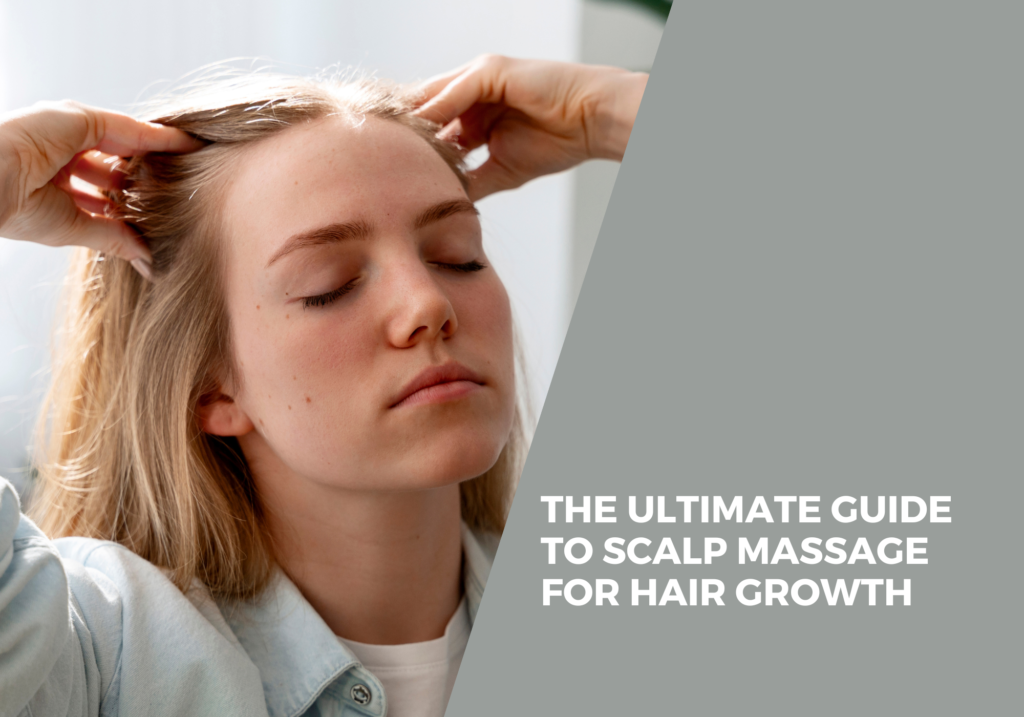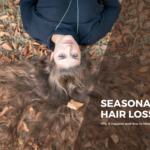In this article:
- What is a Scalp Massage
- Scalp Massage Benefits
- Scalp Massage Techniques
- Scalp Massage for Hair Loss
- How Often Should You Massage Your Scalp
- Essential Oils for Scalp Massage
Summary:
- Scalp massage boosts blood circulation to hair follicles, supplying essential nutrients and oxygen, which may promote hair growth and help manage hair loss.
- Techniques such as cyclical pressing, pinching, and stretching, along with using a hair scalp massager (manual or electric), can be effective for hair growth.
- Performing a scalp massage daily, may support hair health. Consistency over time can improve scalp massage effectiveness and self-perceived hair health.
- Using oils can enhance the experience, providing moisture and additional nutrients that may benefit hair and scalp health.
- Benefits of scalp massage extend beyond hair health, including relaxation, reduced stress, and removal of dead skin and excess oil from the scalp, contributing to a balanced scalp environment.
Imagine a simple daily ritual that not only melts away stress but also nourishes your scalp, promotes hair growth, and might even combat hair loss. Scalp massage has quickly become a go-to self-care practice, combining relaxation with a host of health benefits. But what makes it so effective? In this guide, we’ll cover everything you need to know about scalp massage—from the best techniques for hair growth at home and the ideal oils to how it can aid in combating hair loss—so you can begin enjoying the benefits of this rejuvenating ritual today.
What is Scalp Massage and What Does It Do?
A scalp massage is a therapeutic technique that involves the manipulation of the scalp and surrounding areas to promote relaxation, improve circulation, and potentially enhance hair health. It typically includes various movements such as pressing, pinching, stretching, and rubbing the scalp with the fingers or hands.
Scalp massage boosts blood flow to hair follicles, giving hair essential nutrients and oxygen. This may improve hair thickness and even support regrowth. Additionally, scalp massage can relieve stress and tension, leaving you feeling relaxed. It also helps remove dead skin and excess oil, keeping your scalp healthy. If you want a soothing way to support your hair journey, scalp massage could be a valuable addition!
Scalp Massage for Hair Loss
Scalp massage, particularly through standardized techniques, may offer some benefits for individuals experiencing hair loss, such as those with androgenic alopecia. While studies show that participants have reported positive changes in their hair condition after scalp massages, there isn’t definitive evidence that these massages can prevent hair loss outright.
However, several factors suggest that they may help mitigate its effects. For instance, scalp massages improve blood circulation to the hair follicles, delivering essential nutrients and oxygen that support healthy hair growth. Additionally, by relieving tension in the scalp muscles, massages can reduce stress, which is often linked to hair loss. The mechanical stimulation of hair follicles during massage might also encourage growth and decrease shedding. Furthermore, the self-care aspect of scalp massages can enhance mental well-being, addressing the psychological factors that contribute to hair loss. Overall, while scalp massages aren’t a guaranteed solution for hair loss, they can be a valuable part of a holistic approach to hair health.
Best Techniques for Scalp Massage for Hair Growth
A study done on Standardized Scalp Massages for Androgenic Alopecia, in which respondents had to follow specific scalp massage technique, and as it turns out participants who engaged in standardized scalp massages (SSM) reported positive outcomes regarding hair regrowth. Specifically, 68.9% of those who attempted the SSMs reported stabilization of hair loss or regrowth. Additionally, the results showed that the estimated total effort in scalp massage was positively associated with self-perceived hair changes, suggesting that these massages may indeed help with hair regrowth in individuals suffering from androgenic alopecia.
How to perform standardized scalp massage (SSM):
- Warm-Up (3 minutes): use cyclical presses across the entire scalp.
- 6 min of scalp skin pinches: single-handed or double-handed pinches with grip spaced 1–2 inches apart. Hold 1–2 s before moving onto adjacent scalp skin 1–2 inches from previous pinch.
- 6 min of scalp skin presses: knuckle- or palm-based skin presses.
- 5 min of scalp skin stretches: single-handed or double-handed skin stretches.
Other scalp massage technique:
For an alternative approach, you can use a scalp massager (manual or electric) by placing it on the head, pressing gently, and moving in small circles around the scalp. Gradually work your way around the scalp, covering all areas – the crown, sides, and nape of your neck.

How Often Should You Massage Your Scalp?
To see potential hair health benefits, the study suggested performing standardized scalp massages twice daily for 20 minutes per session, ideally maintained over several months. Participants in the study reported improvements with just 11–20 minutes of daily massage, though increased daily time often resulted in better outcomes. If a full 20 minutes feels too long, a shorter 3-5 minute scalp massage is still beneficial and more manageable.
Oils for Scalp Massage
Scalp massage using extraction of various essential oils has been recently highlighted and widely used as a means of effective care. Some oils have excellent antibiotic effects on microbes residing in the scalp and also has additional expected effects such as mollification and elimination of keratin layer, and reduced stress.
However, it is common practice in many scalp massage routines to use oils or other topical treatments to enhance the experience and benefits of the massage. Oils can provide additional moisture, improve the glide of the hands over the scalp, and may contain beneficial properties that support hair health.
For you scalp massage you may consider using these oils:
- Rosemary Oil – Known for its tonic properties, it promotes hair growth and helps with dandruff and oily hair.
- Thyme Oil – This oil stimulates blood circulation in the scalp, strengthens hair roots, and alleviates dandruff, making it beneficial for hair growth.
- Cedarwood Oil – It is noted for promoting hair growth and is often used in hair tonics and shampoos.
- Peppermint Oil (Mentha piperita) – It has been shown to facilitate hair growth and promote vascularization of the dermal papillae, which is crucial for hair development 6.
Although, if you decide to use a scalp massage oil, read the instructions for using the specific oil, some oils may interfere with the effects of topical medications. Always consult your doctor before introducing additional cosmetic products during dermatological treatment.
Sources:

